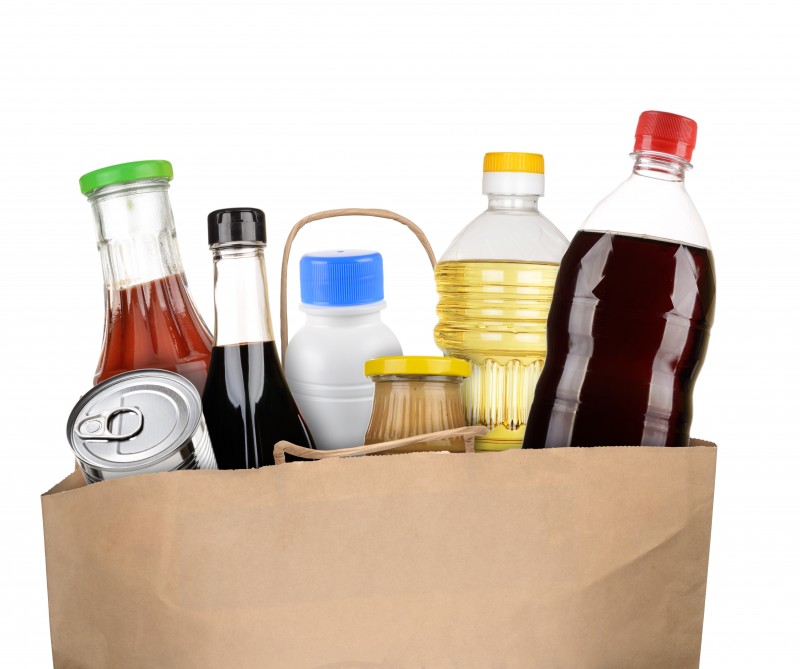
The New Year is that time of the year when the gym gets filled with people hoping to finally commit to getting fit by enrolling in gym memberships, and the produce section of the market is filled with people looking to get healthy.
All noble intentions, but what if I told you there was an easier way to get healthier this year by essentially avoiding a few things? What if I told you that by avoiding these things, you could not just improve your health, but also drop some body fat? I'm guessing at this point I have your attention, and you’re willing to consider avoiding these unknown things. So what do I want you to avoid? Obesogens.
RECENT: How Muscle Adapts to Lifting: Across Scales
In the 1970s, scientists observed that low doses of chemicals contributed to weight gain. Since then, scientists have been exploring how different artificial chemicals are linked to obesity and weight gain.
What is an obesogen? Obesogens are a class of endocrine-disrupting chemicals, or artificial chemicals that impair normal hormone action1. And, as I’m sure you can take from the name obesogen, an obesogen is an endocrine-disrupting chemical that disrupts the endocrine system in ways that promote weight gain and obesity.
Obesogens work in many ways. Some mimic estrogen and other hormones that promote fat storage. Others augment how your body controls your appetite, override normal feelings of fullness, and promote feelings of hunger2. On a deeper level, these obesogens elicit changes at the DNA level and make one more susceptible to becoming obese, gaining weight, and having fat cells increase in number and size2. These changes can be huge, as they don’t just impact the DNA of someone who’s exposed to an obesogen, but they can also affect the DNA of that person’s offspring3-5.

Andrei Kuzmik © 123rf.com
Examples of Obesogens in Everyday Life
Obesogens are everywhere. For example, the obesogen tributyltin can be found in various disinfectants, fungicides, and plastics. When mice are exposed to this chemical in-utero, it’s been shown to cause them and their offspring to be fatter than their non-exposed counterparts.
RELATED: The Basics of Macronutrient Tracking
Other obesogens found in plastics include Bisphenol A (BPA) and phthalates6-8. These obesogens can act as both an estrogen and cortisol mimetic. In mice, in-utero and postnatal exposure causes weight gain, and in humans, exposure has been linked to the onset of obesity and type 2 diabetes6-8. Heavy metals like lead, arsenic, and cadmium also increase the risk of obesity and type 2 diabetes, and they work by mimicking estrogen and impairing how your body uses glucose6-8.
Finally, one of my most hated obesogens is perfluorooctanoic acid because it's a chemical used in nonstick coatings (yes, I love to use nonstick spray instead of butter when I cook). Perfluorooctanoic acid has been linked to a higher BMI in humans and has been shown to increase body weight with prolonged exposure6-8. There are other types of obesogens out there like organophosphates, organochlorines, and those chemicals can be found in insecticides, pesticides, and electronics6-8. Honestly, the list of obesogens out there is rather extensive and scary.
How to Keep Safe From These Suckers
Currently, there isn’t enough scientific evidence out there showing that these chemicals are harmful to have a government organization like the FDA step in and ban them. Also, they are freaking everywhere, which is both depressing and disappointing.
So what can you do? Instead of wallowing and worrying that you have no option to stop exposure, you can focus on preventing and minimizing it. To do that, you can do things like eliminate your use of plastics (and heating up those plastics), replace your use of nonstick spray cooking with butter (who knew using fat might keep you from getting fat), use BPA-free water bottles, and reduce your consumption of packaged and canned foods and meats. And you can do your best to take preventive measures like exercising and eating right to have the positive adaptations those things do to your DNA counteract the bad adaptations that happen when you get exposed to an obesogen!
References
- Grun, F. & Blumberg, B. Environmental obesogens: organotins and endocrine disruption via nuclear receptor signaling. Endocrinology 147, S50-55 (2006).
- Janesick, A.S. & Blumberg, B. Obesogens: an emerging threat to public health. American journal of obstetrics and gynecology 214, 559-565 (2016).
- Skinner, M.K. et al. Ancestral dichlorodiphenyltrichloroethane (DDT) exposure promotes epigenetic transgenerational inheritance of obesity. BMC medicine 11, 228 (2013).
- Anway, M.D., Cupp, A.S., Uzumcu, M. & Skinner, M.K. Epigenetic transgenerational actions of endocrine disruptors and male fertility. Science 308, 1466-1469 (2005).
- Manikkam, M., Tracey, R., Guerrero-Bosagna, C. & Skinner, M.K. Plastics derived endocrine disruptors (BPA, DEHP and DBP) induce epigenetic transgenerational inheritance of obesity, reproductive disease and sperm epimutations. PloS one 8, e55387 (2013).
- Kelishadi, R., Poursafa, P. & Jamshidi, F. Role of environmental chemicals in obesity: a systematic review on the current evidence. Journal of environmental and public health 2013, 896789 (2013).
- Wang, B. & Zhou, Y. [Relationship between environmental endocrine-disrupting chemicals and obesity epidemic]. Zhonghua yu fang yi xue za zhi [Chinese journal of preventive medicine] 47, 297-300 (2013).
- Thayer, K.A., Heindel, J.J., Bucher, J.R. & Gallo, M.A. Role of environmental chemicals in diabetes and obesity: a National Toxicology Program workshop review. Environmental health perspectives 120, 779-789 (2012).










